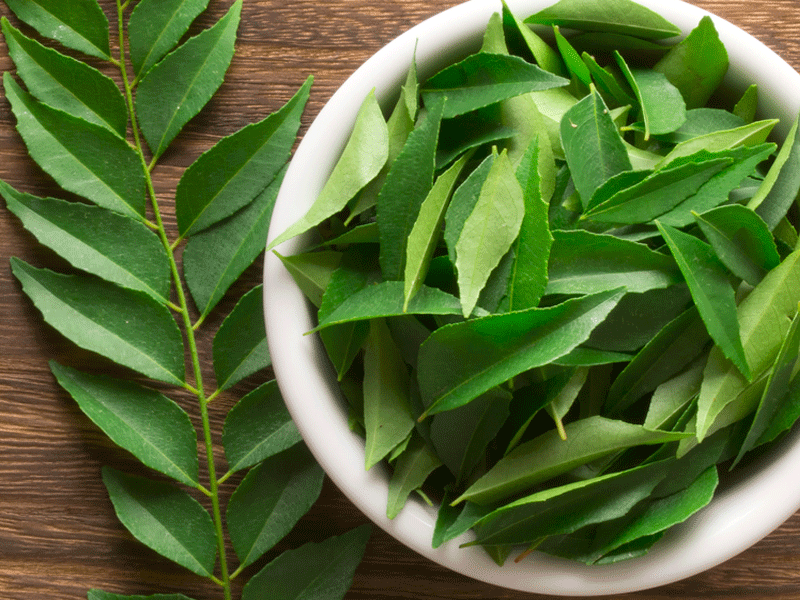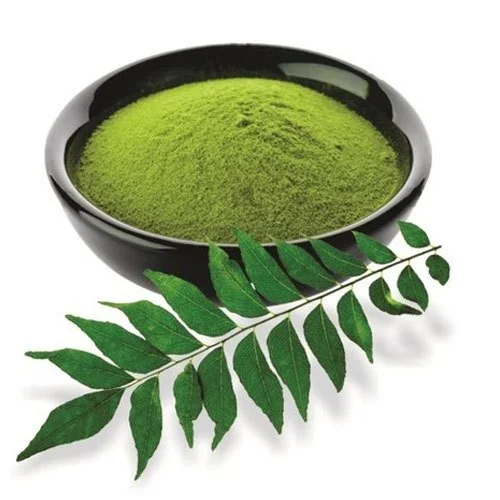The HS code for curry leaves is 0910, which is used for ginger, saffron, turmeric, thyme, bay leaves, curry, and other spices..
Curry Leaves: A Flavorful Essential in Indian Kitchens
Curry leaves, or curry patta in Hindi, are a staple in Indian cuisine, known for their unique aroma and ability to enhance the flavor of dishes. Beyond their culinary significance, curry leaves are prized for their medicinal properties and cultural importance. In this article, we explore the types of curry leaves available in India, their uses, and the states where they are predominantly cultivated.
What Are Curry Leaves?
Curry leaves (Murraya koenigii) are aromatic herbs from the Rutaceae family, native to India and Sri Lanka. These small, green, shiny leaves are a key ingredient in South Asian cooking, particularly in tempering dishes such as dals, curries, and chutneys. Curry leaves are also valued for their therapeutic benefits, including their role in promoting digestion, reducing cholesterol, and boosting immunity.
Types of Curry Leaves in India
India is home to various types of curry leaves, each with subtle differences in flavor, aroma, and growth characteristics.
1. Regular Curry Leaves
This is the most common variety, widely used in Indian households. These leaves are medium-sized, with a mildly sweet and citrusy aroma. They grow on compact shrubs and are perfect for daily culinary use.
2. Dwarf Curry Leaves
As the name suggests, these leaves come from dwarf plants that are smaller in size but highly productive. They are often grown in pots and gardens due to their adaptability to limited spaces. The leaves are similar in taste and aroma to the regular variety.
3. Gamthi Curry Leaves
Gamthi curry leaves are native to Gujarat and parts of Maharashtra. They are smaller, thicker, and darker compared to other varieties, with an intense aroma and flavor. These leaves are often preferred for their concentrated essence and longer shelf life.
4. Organic Curry Leaves
Organic curry leaves are grown without the use of synthetic pesticides or fertilizers, ensuring a healthier and more eco-friendly option. These are becoming increasingly popular among health-conscious consumers.
Curry Leaves Across Indian States
Curry leaves are grown in various states of India, where the climatic conditions favor their cultivation. Below is a list of key states and regions known for producing curry leaves:
1. Andhra Pradesh and Telangana
The southern states of Andhra Pradesh and Telangana are major producers of curry leaves. Their warm climate and rich soil make them ideal for large-scale cultivation.
2. Tamil Nadu
Tamil Nadu is synonymous with traditional South Indian cuisine, where curry leaves are indispensable. The state is a significant grower of both regular and organic curry leaves.
3. Karnataka
Known for its diverse flora, Karnataka is another prominent state for curry leaf production. Farmers here often cultivate the leaves alongside other spices like cardamom and black pepper.
4. Kerala
In Kerala, curry leaves are a cornerstone of the culinary tradition. The tropical climate and fertile soil in the region contribute to high-quality, aromatic curry leaves.
5. Gujarat and Maharashtra
In the western part of India, curry leaves are cultivated on a smaller scale, with varieties like Gamthi being particularly popular. These states cater to both local and regional demands.
6. Northern and Eastern States
While not traditionally grown in northern and eastern India, the demand for curry leaves has led to increased cultivation in states like Uttar Pradesh, West Bengal, and Odisha. However, production in these regions is relatively lower compared to the south.
Uses of Curry Leaves
Curry leaves are highly versatile and find applications in various aspects of Indian life.
1. Culinary Use
- Tempering: Curry leaves are commonly sautéed with mustard seeds, cumin, and chilies to add flavor to dishes like sambhar, rasam, and chutneys.
- Fried Snacks: They are often used in fried snacks such as pakoras and vadas for an extra punch of flavor.
- Powders and Pastes: Curry leaves can be ground into chutney or powdered to enhance spice blends.
2. Medicinal Benefits
Curry leaves are rich in antioxidants, vitamins, and minerals, offering several health benefits:
- Aid in digestion and reduce flatulence.
- Help regulate blood sugar levels, making them beneficial for diabetics.
- Strengthen hair follicles and prevent premature greying when used in hair treatments.
3. Cultural Significance
In some Indian traditions, curry leaves are used in religious ceremonies and rituals. They are also considered auspicious in certain communities.
Cultivating Curry Leaves
Curry leaves are relatively easy to grow, making them a popular choice for home gardens. They thrive in warm, tropical climates and require well-drained soil with moderate watering.
For those living in urban areas, dwarf varieties can be grown in pots or containers on balconies and terraces. With proper care, curry leaf plants can yield leaves for years, ensuring a constant supply for culinary and medicinal use.
Conclusion
Curry leaves are an essential part of Indian culinary and cultural heritage, offering a distinctive flavor and numerous health benefits. Whether it’s the common variety found in every kitchen or the rare Gamthi leaves, curry leaves continue to hold a cherished place in Indian households.
The diverse types of curry leaves, coupled with their widespread availability across states, ensure that this humble herb remains a beloved ingredient in kitchens across the country. So the next time you add curry leaves to your dish, remember their journey from the tropical gardens of India to your plate!





